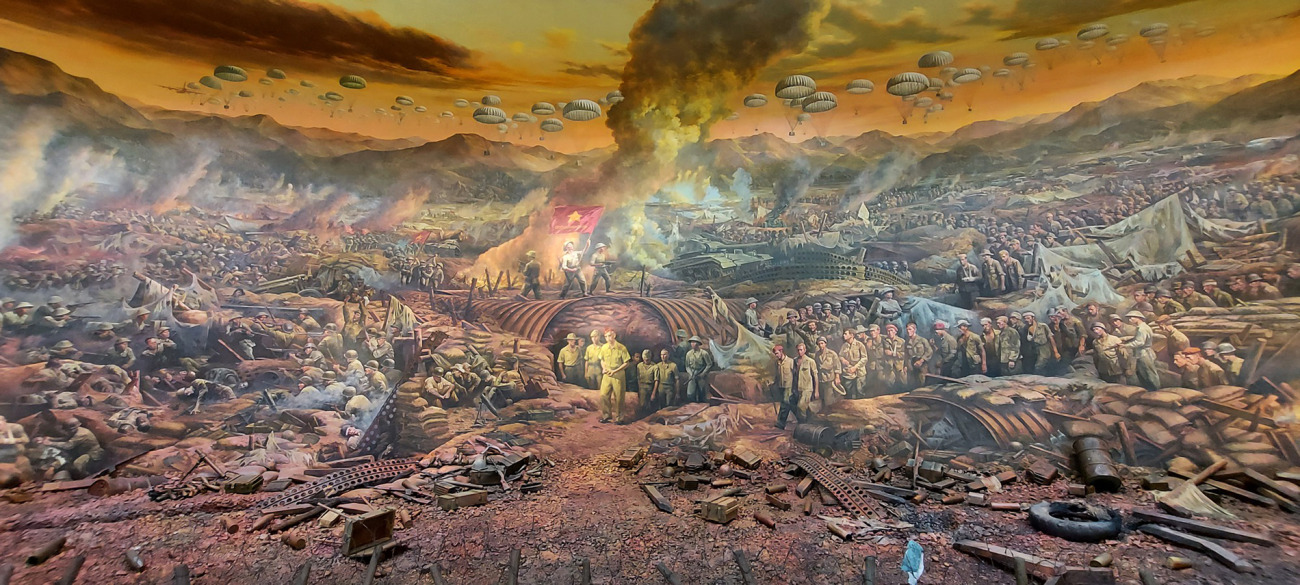A panorama of Dien Bien Phu Campaign
A panorama of the Dien Bien Phu Campaign made its official debut on May 7 in Dien Bien Province to mark Dien
Dien Bien is about 450 km from Hanoi, borders Son La and Lai Chau and has borders with China and Laos; the capital is Dien Bien Phu City, which has Muong Lay town and 8 districts.
 Dien Bien has a tropical monsoon climate with high mountains, cold winters and little rain, and hot summers with lots of rain, influenced by dry and hot west winds. The average annual temperature is from 21 to 23 degrees Celsius; the lowest is about 13 degrees Celsius, and the highest is about 25 degrees Celsius. The dry season lasts from October to April of the following year; the rainy season is usually from May to April. The most sunshine is in the months of March-April and August-September.
Dien Bien has a tropical monsoon climate with high mountains, cold winters and little rain, and hot summers with lots of rain, influenced by dry and hot west winds. The average annual temperature is from 21 to 23 degrees Celsius; the lowest is about 13 degrees Celsius, and the highest is about 25 degrees Celsius. The dry season lasts from October to April of the following year; the rainy season is usually from May to April. The most sunshine is in the months of March-April and August-September.
Dien Bien is rich in tourism potential, especially in culture and history. The most prominent is the system of historical relics of the Dien Bien Phu victory, including the campaign headquarters in Muong Phang, Him Lam, Ban Keo, Doc Lap bases, hills A1, C1, D1, E1 and the French central area stronghold group (Do Cat tunnel).
Besides, Dien Bien has many caves, mineral water sources and lakes creating rich natural tourism resources such as Muong Nhe primeval forest, Pa Thom cave, Tham Pua, Hua Pe hot spring, U Va, Pa Khoang and Pe Luong lakes.
After a period of closure for upgrading, Dien Bien Airport welcomed passengers again on December 2, 2023. Vietnam Airlines has direct flights from Hanoi on all days of the week; round-trip ticket prices range from 1.6 to 2.8 million VND. Ho Chi Minh City Travellers can also fly with Vietnam Airlines, with a stop in Hanoi. Vietjet has direct flights from Ho Chi Minh City with a frequency of 3 flights a week on Tuesdays, Thursdays and Saturdays, with a round-trip ticket price of about 2 million VND.
Read more: Vietnam Airlines sells cheap tickets for Hanoi - Dien Bien route
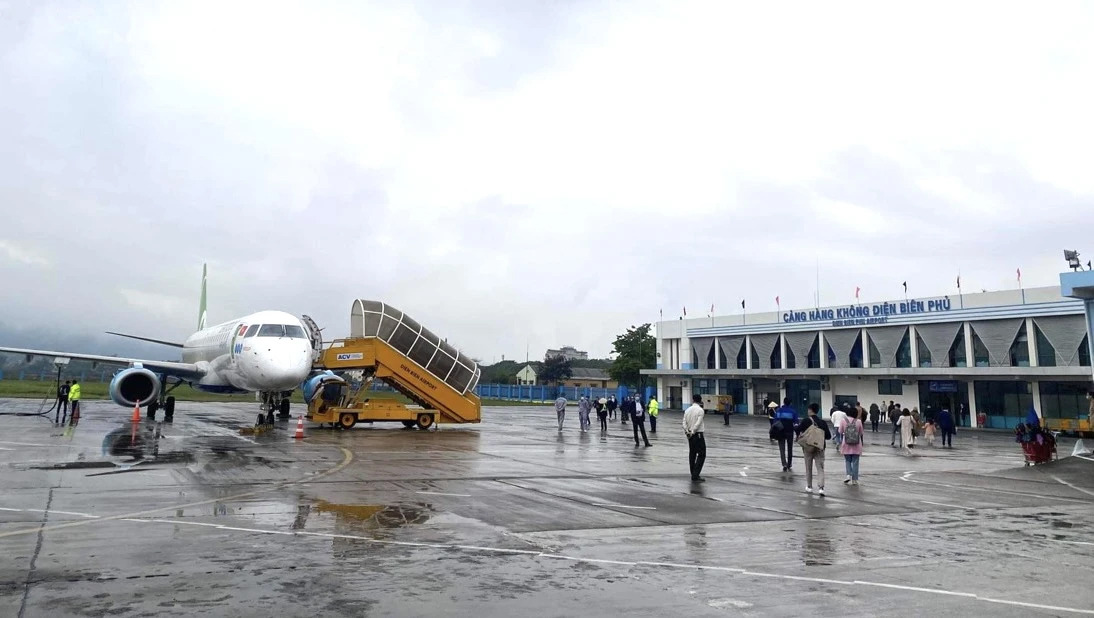 The road from Hanoi to Dien Bien Phu City is 450 km long. Tourists can follow CT08, CT02, and QL6 through Hoa Binh province or follow routes DT87, QL32, and QL37 through Hoa Binh and Son La. Travel time is about 10 hours.
The road from Hanoi to Dien Bien Phu City is 450 km long. Tourists can follow CT08, CT02, and QL6 through Hoa Binh province or follow routes DT87, QL32, and QL37 through Hoa Binh and Son La. Travel time is about 10 hours.
Passenger buses running the Hanoi: Dien Bien route have many bus companies such as Nam Lien, Nam Oanh, Hai Van, Khanh Le, Cuong Tam, and Chien Ha, and ticket prices range from 300,000 VND to 350,000 VND. The bus departs from My Dinh Wharf.
To get to Dien Bien Phu city, you must pass Pha Din pass - one of the four great passes of Vietnam. Pha Din Pass borders Thuan Chau District, Son La Province, Tuan Giao District, and Dien Bien Province. The pass is 32 km long.
Hotels in Dien Bien are mainly concentrated in Dien Bien Phu city, with various room types, from motels and homestays to 3-4 star hotels.
Muong Thanh Dien Bien Hotel, Him Lam Hotel, Dien Bien-Hai Van, Phuong Nam, and An Loc have room rates from 700,000 VND to 1.2 million VND per night.
Motels in the city cost from 150,000 to 300,000 VND per night. Some homestays suggested by the Tourism Promotion Information Center of Dien Bien province include Muong Then, Phuong Duc, Dien Bien - Rose Valley, and Nang Ban.
The Dien Bien Phu victory relic complex is an important part of the journey to visit historical destinations in Dien Bien province. Most of these places are located next to each other, so it is convenient for tourists to visit in one session.
Located in Muong Thanh ward, Dien Bien Phu city, A1 hill is one of the most important bases of the battle, considered the "throat" protecting the central area.
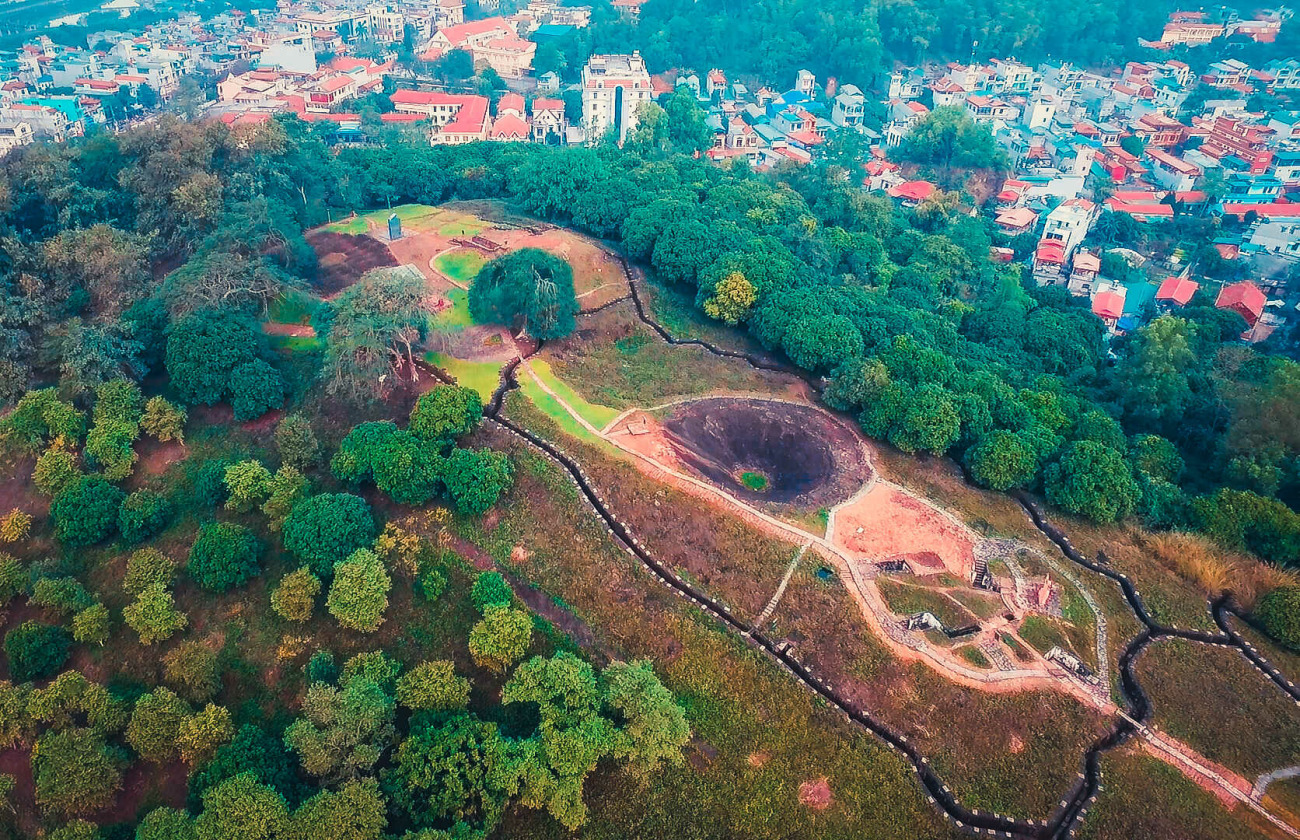 The name A1 is the name the Vietnamese military gave the hill; there were many other names before that. Around A1, the French army built a system of barbed wire fences of all shapes. The battle on Hill A1 was fierce, long, and involved many sacrifices. On the top of the hill is a fortified cellar, the wine cellar of the French legation before 1945. The cellar is divided into two compartments, one of which is the workplace of the radio information department. The tunnel is made of sturdy materials, solid brick walls, and a thick concrete roof, which can be a hiding place for dozens of people. On hill A1, there are still traces of a blast hole created by 960 kg of explosives.
The name A1 is the name the Vietnamese military gave the hill; there were many other names before that. Around A1, the French army built a system of barbed wire fences of all shapes. The battle on Hill A1 was fierce, long, and involved many sacrifices. On the top of the hill is a fortified cellar, the wine cellar of the French legation before 1945. The cellar is divided into two compartments, one of which is the workplace of the radio information department. The tunnel is made of sturdy materials, solid brick walls, and a thick concrete roof, which can be a hiding place for dozens of people. On hill A1, there are still traces of a blast hole created by 960 kg of explosives.
At A1 Hill today, besides sightseeing, visitors can also experience several practical activities such as cooking soldiers' rice with Hoang Cam stoves, pushing bicycles to transport necessities, and listening to stories about the Dien Bien Phu campaign and soldiers' lives in combat.
 The French colonialists in the centre of the Dien Bien Phu stronghold group in Muong Thanh field wonderfully built General De Cat's command bunker. The tunnel is located about 1 km from hill A1 and is known as "the most solid tunnel in Indochina". Surrounding the tunnel is a defensive fence with a dense barbed wire system and four tanks. Currently, the structure and layout of the cellar are still maintained for visitors to visit. The tunnel is 20 m long and 8 m wide, including four rooms used for both the living and working places of General De Cat and his soldiers.
The French colonialists in the centre of the Dien Bien Phu stronghold group in Muong Thanh field wonderfully built General De Cat's command bunker. The tunnel is located about 1 km from hill A1 and is known as "the most solid tunnel in Indochina". Surrounding the tunnel is a defensive fence with a dense barbed wire system and four tanks. Currently, the structure and layout of the cellar are still maintained for visitors to visit. The tunnel is 20 m long and 8 m wide, including four rooms used for both the living and working places of General De Cat and his soldiers.
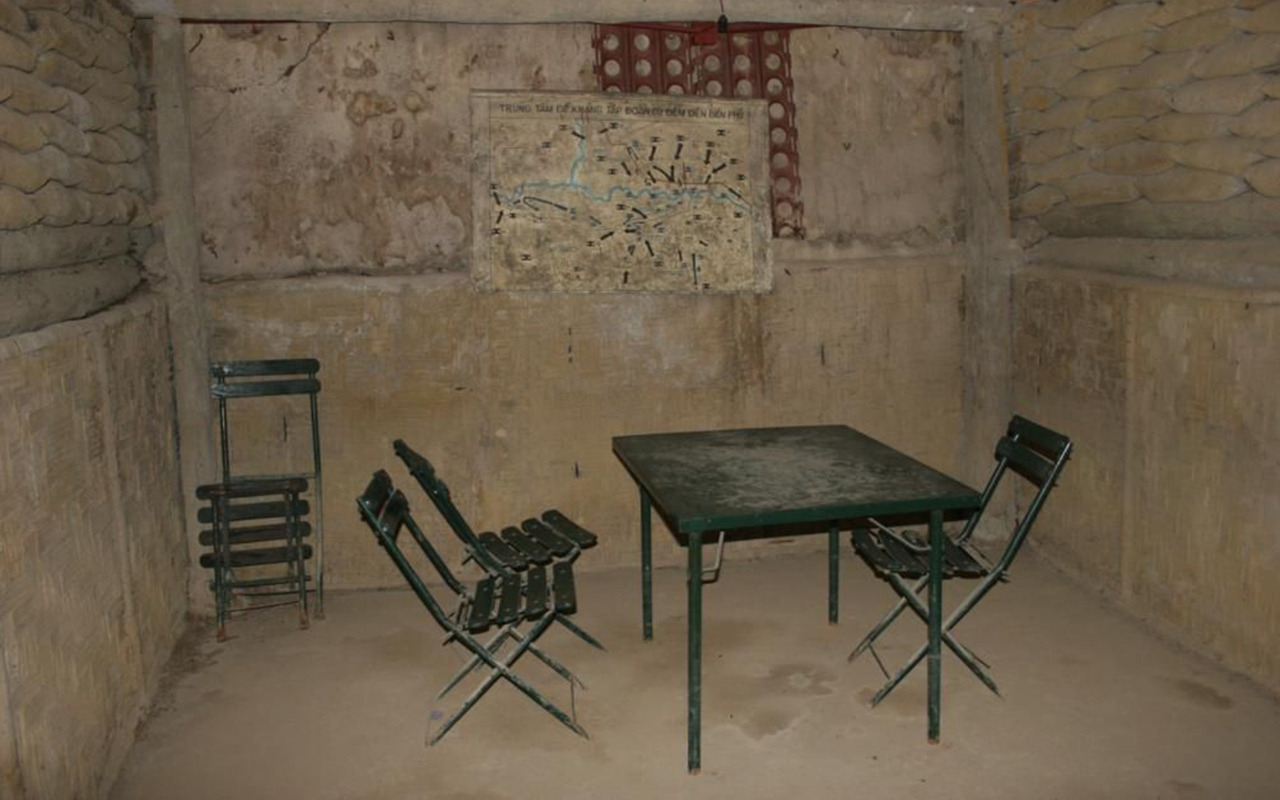
Dien Bien Phu Victory Museum is in Muong Thanh ward, welcoming visitors from May 5, 2014, after 19 months of construction. This is a work of great historical, cultural and artistic significance.
Also read: A panorama of Dien Bien Phu Campaign
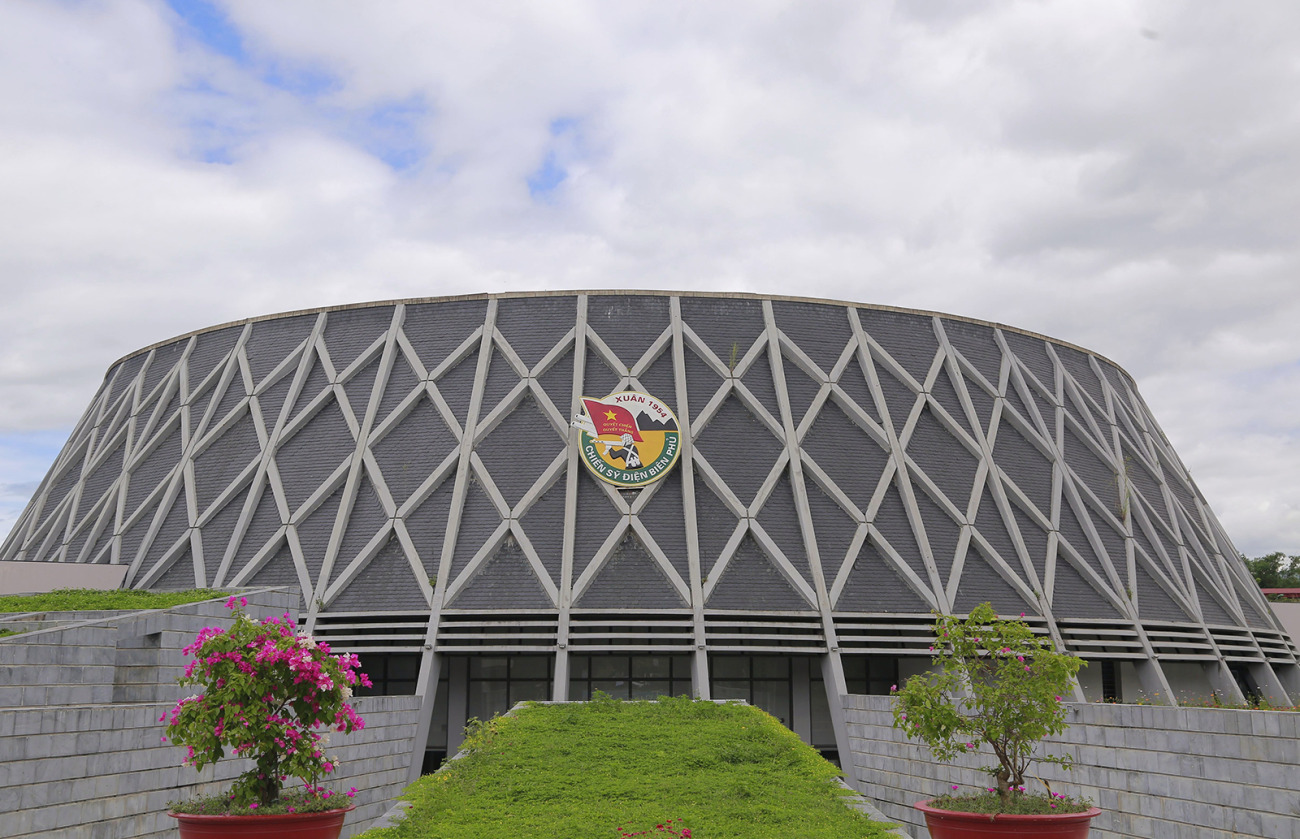 The special highlight here is the panorama painting with more than 4,500 characters, 132 m long, 20.5 m high, 42 m diameter, 6 m relief, and more than 3,200 m2 total. The painting was painted in oil on canvas from November 2019 and completed on May 1, 2021, with the participation of about 100 artists. Each drawing shows the 1954 Dien Bien Phu Campaign stages continuously and impressively.
The special highlight here is the panorama painting with more than 4,500 characters, 132 m long, 20.5 m high, 42 m diameter, 6 m relief, and more than 3,200 m2 total. The painting was painted in oil on canvas from November 2019 and completed on May 1, 2021, with the participation of about 100 artists. Each drawing shows the 1954 Dien Bien Phu Campaign stages continuously and impressively.
Read more: Gigantic painting reenacts historic Dien Bien Phu Victory